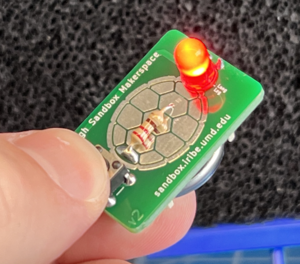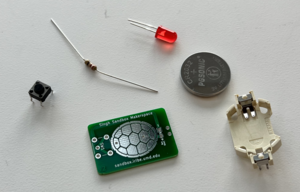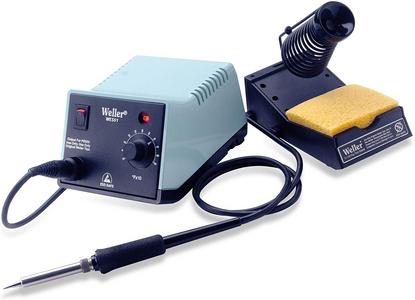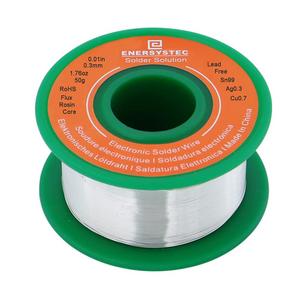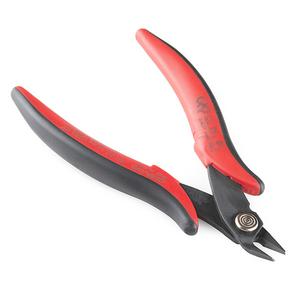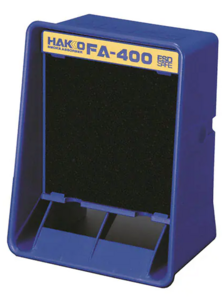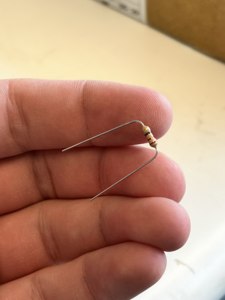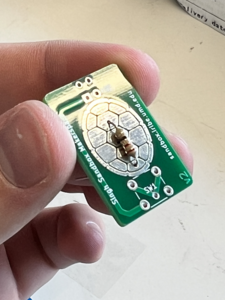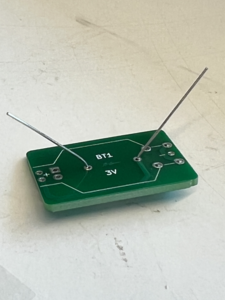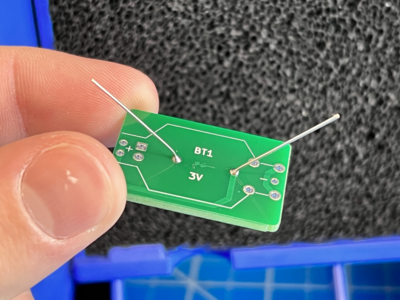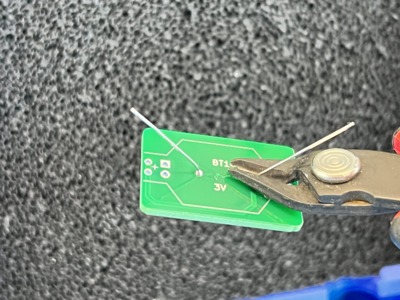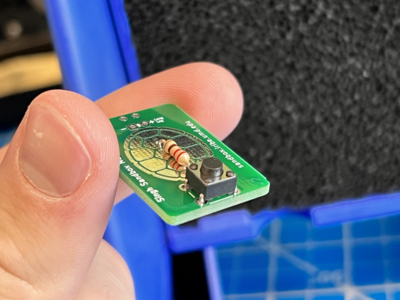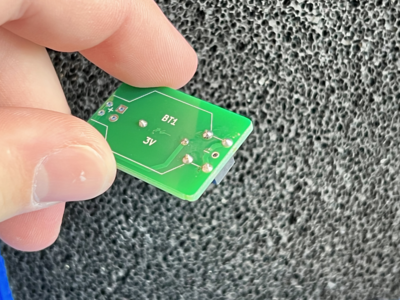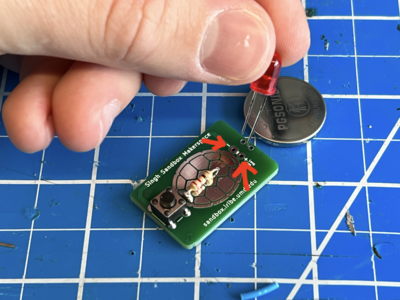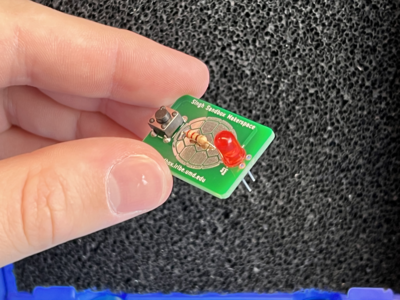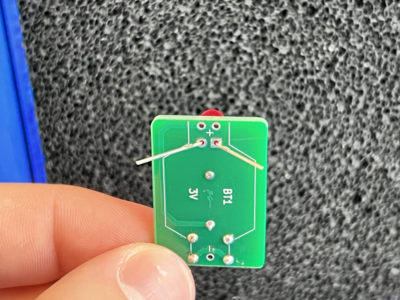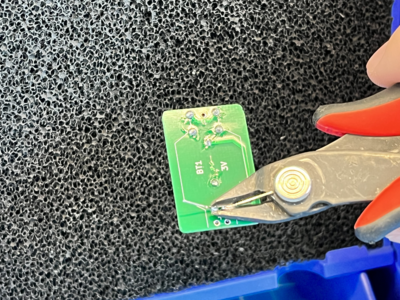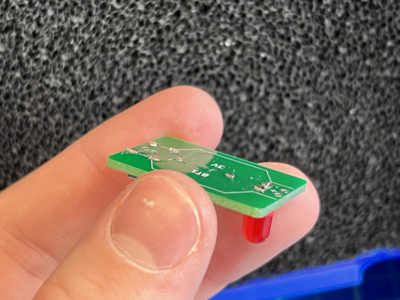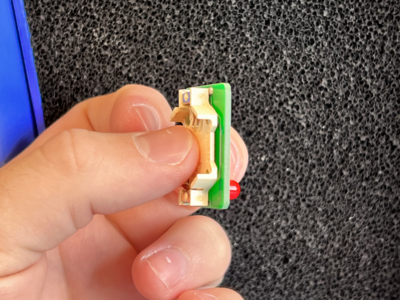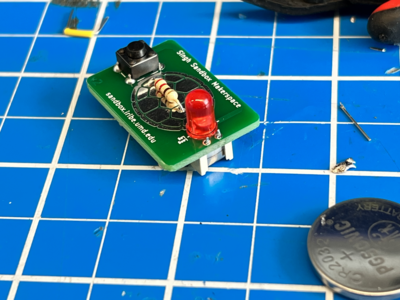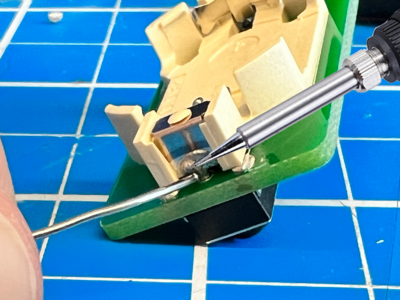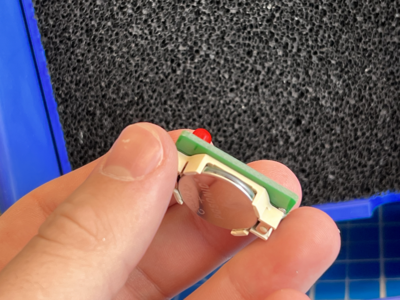Learn to Solder Kit
The Learn to Solder Kit is a bag of electronics that, when combined with this page, acts as a good first soldering project.
What's in the bag
The kit contains:
- A Printed Circuit Board (PCB)
- An LED
- A 220 Ohm (Ω) Resistor
- A push button
- A battery holder
- A battery (CR2032)
Tools Required
Weller WES51 Soldering Iron*
Tutorial
Setup
Heat the soldering iron up to 700°F and wait about 30 seconds for it to heat up. Turn on the filter fan so that you don't breathe in the fumes.
Get the items out of the bag.
Step 1: The Resistor
The resistor is the small component with long leads and stripes on it.
It belongs in the metal shell logo on the PCB. Orientation does not matter for this component.
Bend the leads of the resistor inwards. They should be about the same distance apart as the holes in the PCB.
Slide the resistor into its holes on the PCB.
When it is all the way in, flip the board and bend the leads outward so that the resistor can't fall back out.
Then, solder the connections and snip the rest of the leads.
Step 2: The Switch
The switch is the square component with a button and four pins.
Its footprint on the circuit board is marked by a "SW1".
With the legs facing out to the sides, simply put the legs through the holes.
When it is pushed all the way in, it should be held in with just tension.
Flip the board and solder all four legs. No need to snip anything yet.
Step 3: The LED
The LED is the component with the color plastic top and two legs.
One leg is longer than the other, this is the positive (+) leg. Orientation does matter for this component.
Its place on the PCB is marked with a - and a + (Long Leg). Place the LED into its correct holes.
Flip the board, bend the leads, and solder them as before.
Snip the excess as before.
Step 4: The Battery Holder
The battery holder is the beige component three leads. Orientation does matter for this component.
The lead by itself is the negative (-) lead, and the two leads on the other side are both positive (+).
Its place on the PCB is marked on the backside of the PCB with a "BT1". It also indicates that the battery should be 3V (3 Volts).
Before placing the battery holder, use the flush cutters to snip any raised solder joints from the other components. Make the surface as flush as you can.
Once that's done, place the battery holder into its holes.
The positive leads can be soldered from the opposite side as normal, but the negative one cannot because of the button on the other side.
Solder the negative lead on the top. It is harder than soldering from the opposite side, but it doesn't need to be the best solder job in the world.
Step 5: The Battery
This one's easy. There's only one component left, and it's the battery.
The battery has a + and a - side. Recognize the + sign on the top of the battery.
Place the battery in the holder, + side up.
Finish!
Congratulations! You've finished your first soldering project! Press the button, and the LED should light up!
